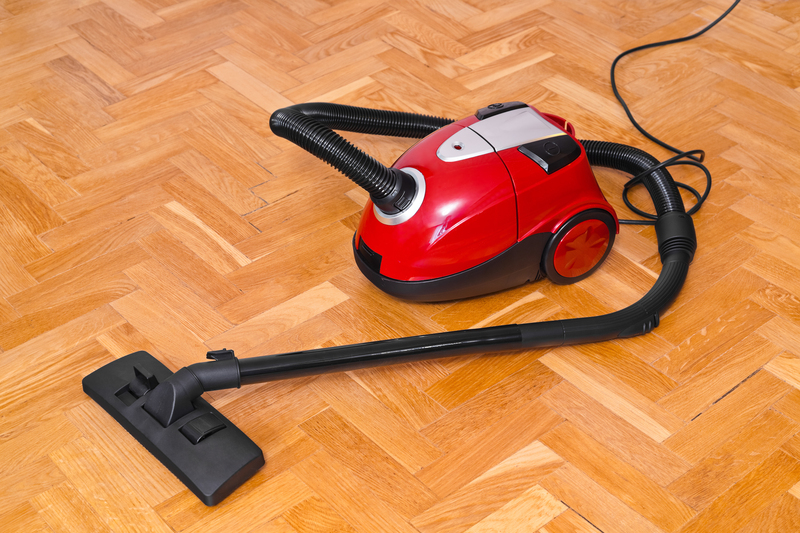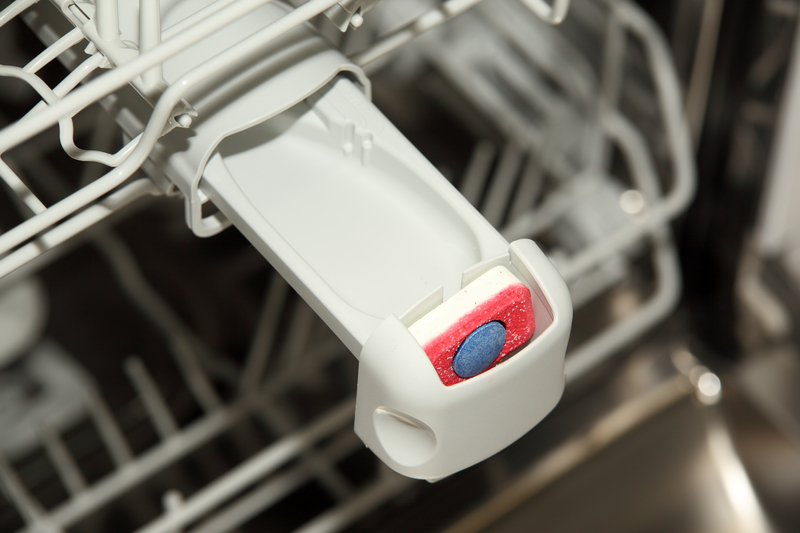Effortlessly Clean Your Stovetop by Tackling Burnt-on Residue
Posted on 02/07/2025
Effortlessly Clean Your Stovetop by Tackling Burnt-on Residue
Is your stovetop plagued by stubborn, burnt-on residue that refuses to budge? You're not alone! Many home cooks dread the task of scrubbing away cooked-on spills and grime, wondering if their stovetop will ever look sparkling clean again. The good news? With the right techniques and products, you can make your stovetop look brand new without hours of back-breaking effort. In this comprehensive guide, we'll show you how to clean your stovetop effortlessly by tackling even the toughest burnt-on residue, using both store-bought and natural methods.

Why Burnt-on Residue is So Difficult to Remove
Burnt-on residue is the result of food, oils, and sauces that spill over and get heated repeatedly on your stovetop. The more they're exposed to heat, the tougher they become, essentially "baking" into the stovetop surface. If left untreated, these residues not only look unsightly but can also become a breeding ground for bacteria.
- Daily spills can quickly accumulate and harden.
- High heat carbonizes food, binding it to the surface.
- Repeated cooking layers new residue over old stains, making removal more difficult.
But don't worry! Cleaning burnt-on residue from your stove top can be surprisingly easy if you follow the right steps.
Preparation: What You Need to Clean Burnt-On Residue
Before starting, gather your supplies. Having the right tools and cleaners on hand makes the process smoother and more effective. Here's a handy checklist:
- Baking soda--A natural abrasive for loosening stains.
- White vinegar--Helps dissolve grime and cut grease.
- Dish soap with degreasing agents.
- Soft cloths, paper towels, or non-abrasive sponges.
- Razor blade scraper or plastic scraper (for glass top stoves only).
- Old toothbrush or soft brush for scrubbing around burners.
- Rubber gloves to protect your hands.
Optional tools:
- Specialized stovetop cleaner for gas or glass stoves.
- Lemon juice for tough, natural degreasing.
- Microfiber cloth for streak-free drying.
Step-by-Step Guide to Effortlessly Cleaning Your Stovetop
Step 1: Ensure Safety First
- Always turn off the stove and let it cool completely before cleaning.
- Unplug electric burners (if possible) and remove any metal grates or burners so you can access the surface below.
Step 2: Remove Loose Debris
Wipe away any loose crumbs or easily removable residue with a dry cloth or paper towel. This first step prevents scratching and helps focus your efforts on the stuck-on grime.
Step 3: Apply a Stovetop Cleaning Solution
For gas or coil stoves: Mix a few drops of dish soap with warm water and dampen a cloth. Wipe down the surface to quell grease and begin softening residue. For areas with heavy burnt-on gunk, sprinkle a generous amount of baking soda directly onto the affected spots.
For glass or ceramic stovetops: Avoid harsh scouring pads. Instead, use a designated glass stove top cleaner or a mixture of baking soda and water to form a thick paste. Apply the paste liberally across the burnt-on residue.
Step 4: Let the Solution Sit
Patience is key when dealing with caked-on messes. Let the baking soda paste or stove cleaner sit for at least 15-20 minutes. This softens and loosens the residue, reducing the need for heavy scrubbing later. For tougher jobs, let it soak for up to 30 minutes.
Step 5: Scrub Gently
Take a non-abrasive sponge or cloth and scrub the surface using gentle, circular motions. Focus on the areas with the heaviest build-up. Don't use steel wool or metal scouring pads as they can scratch and ruin your stovetop.
- Use an old toothbrush to get around burners, dials, or hard-to-reach areas.
- If residue won't budge on a glass stove, try a razor blade scraper held at a 45-degree angle. Gently push the softened residue off the surface--but be careful not to gouge the glass!
Step 6: Tackle Stubborn Burnt-On Residue
If stains remain, try these expert tips:
- Spray white vinegar or lemon juice over the remaining residue and let it fizz with the baking soda. This reaction helps lift particularly stubborn gunk.
- For greasy, charred deposits, repeat the baking soda paste step and allow for a longer soak time.
- Reassemble grates and burners after cleaning them separately with hot soapy water or a degreasing cleaner.
Step 7: Rinse and Buff
Once all residue is removed, wipe the stove with a clean, damp cloth to get rid of any remaining cleaner, paste, or grease. Then, buff it dry with a microfiber cloth to prevent streaks and restore shine.
Special Considerations for Different Stovetop Types
1. Gas Stovetops
Gas stovetops often collect grime around the burners and underneath the grates. Here's how to handle them:
- Remove the grates and soak them in hot, soapy water for 10-15 minutes.
- Scrub with a non-abrasive pad and rinse well.
- Clean burner heads with an old toothbrush dipped in vinegar (avoid getting liquid in the gas ports).
- Dry grates and burner heads thoroughly before reassembling.
2. Electric Coil Stovetops
- Unplug coils before cleaning (if possible).
- Wipe coils with a damp cloth--don't submerge in water.
- Remove and clean drip pans with a mixture of baking soda and vinegar, then rinse and dry them well.
- Clean the main surface following the steps above.
3. Glass and Ceramic Stovetops
- Always use non-abrasive cleaners and specialty glass stovetop solutions to prevent scratching.
- For persistent burns, apply a baking soda paste as described and use a plastic scraper or razor blade at a low angle.
- Buff dry with a microfiber cloth for a streak-free finish.
Natural Homemade Solutions for Cleaning Burnt-on Stovetop Residue
If you prefer to avoid harsh chemicals, these natural methods are highly effective for tackling burnt-on stove residue:
- Baking Soda & Vinegar Reaction: Sprinkle baking soda over the stains, then spray with white vinegar. Let it fizz for 10-15 minutes, then wipe away softened grime.
- Lemon Juice Power: Cut a lemon in half and rub it directly over the affected areas. This cuts grease naturally and leaves a fresh scent.
- Salt & Baking Soda Scrub: For extra abrasion, mix equal parts salt and baking soda with a dash of water. Gently scrub over burnt spots being mindful not to scratch sensitive surfaces.
These methods are gentle on your stovetop and safer for the environment--plus, they're budget-friendly!
Preventing Burnt-on Residue: Keep Your Stovetop Spotless
The best way to ensure your stovetop is always clean is to prevent residue from burning on in the first place. Here are essential tips for prevention:
- Wipe spills immediately! The longer spills sit, the more likely they'll burn and become tough to remove.
- Use burner covers or mats to catch messes before they reach the surface (be sure they're compatible with your stove type).
- Give your stovetop a quick clean every night--even if it doesn't look dirty, invisible residue might be forming.
- Deep clean once a week by removing burners, grates, and drip pans--and address any lingering stains.
- For gas stoves, regularly check and clean burner ports to keep them clear.
Common Mistakes to Avoid When Cleaning Burnt-on Residue
Even with the best intentions, you can accidentally damage your stovetop. Here's what not to do:
- Avoid steel wool, metal scrapers, or abrasive cleaners--these can permanently scratch and dull surfaces, especially on glass and ceramic stoves.
- Don't use ammonia or bleach-based cleaners on colored or coated stovetops; they can cause discoloration, pitting, and toxic fumes.
- Never use excess water near electric burners--moisture can cause shorts or corrosion.
- Do not reassemble burners or grates while wet--let them dry completely.

When to Call a Professional
If burnt-on residue persists after several attempts and is impacting burner function or safety, it may be time to call a professional. Appliance repair services can deep clean your stove or recommend replacement parts if needed, ensuring both hygiene and performance.
Effortlessly Sparkling Stovetop--The Final Touch
Cleaning burnt-on residue from your stovetop doesn't have to be a dreaded chore. By following the methods outlined above, you'll quickly restore your stove's shine while minimizing elbow grease. Whether you favor natural home remedies or professional cleaning products, consistency is your best friend. Regular maintenance and fast attention to spills will ensure your stovetop stays inviting, hygienic, and ready for your next culinary masterpiece!
To recap, here's how to effortlessly clean your stovetop by tackling burnt-on residue:
- Remove loose debris and tackle stains promptly.
- Apply the right cleaning solutions or a baking soda paste.
- Let the solution sit, then gently scrub using safe tools.
- Rinse and buff for a streak-free finish.
- Maintain your stovetop daily to prevent future build-up!
Your stovetop can look like new again--just a few smart steps to a cleaner, happier kitchen!
Related Search Terms:
- How to remove stubborn stovetop residue
- Best way to clean burnt-on food from stove
- Natural stovetop cleaning methods
- Effortless clean for glass stove top
- Maintain a spotless cooktop
With these expert tips, you'll never be intimidated by burnt-on messes on your stovetop again. Happy cleaning--and happy cooking!
```




